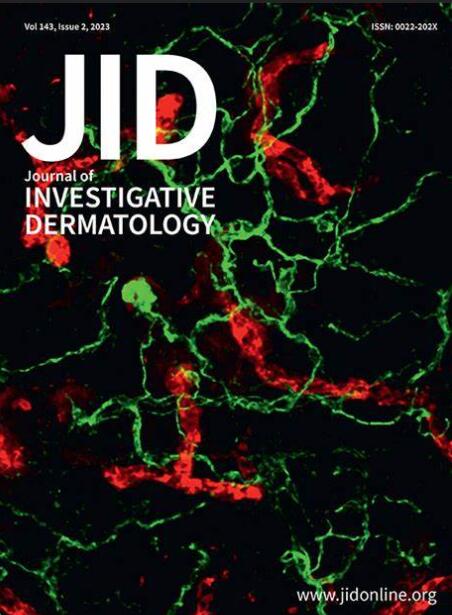Current Insights on Lipidomics in Dermatology: A Systematic Review
IF 5.7
2区 医学
Q1 DERMATOLOGY
引用次数: 0
Abstract
Inflammatory dermatoses and lipid disturbances are interrelated, especially owing to chronic inflammatory conditions. This study aimed to investigate recent findings about lipidomic and dermatologic diseases as well as on the sampling techniques developed to study lipidomics in vivo and analytical and statistical approaches employed. A systematic review was designed using the search algorithm (lipidomics) AND (skin OR dermatology OR stratum corneum OR sebum OR epidermis), following Preferred Reporting Items for Systematic Reviews and Meta-Analyses (PRISMA) guidelines. The literature search identified 1013 references, and finally, only 48 were selected, including a total of 2651 participants with a mean age of 34.13 ± 16.28 years. The dermatologic diseases evaluated were atopic dermatitis, acne, psoriasis, hidradenitis suppurativa, and other skin diseases. Sebutape was the primary sampling technique for lipidomics research. Most of the studies performed untargeted profiling through liquid chromatography with tandem mass spectrometry statistically analyzed with principal component analysis, orthogonal partial least-squares discriminate analysis, heatmap, and volcano plot models. The most consulted databases were LIPIDMAPS Structure Database, MetaboAnalyst, and Human Metabolome Database. A large heterogeneity of lipidomic and lipid metabolism profiles was observed in patients with skin diseases. Skin lipidomic analysis is valuable in exploring skin disease and has ample translational potential.

关于皮肤病学中脂质组学的最新见解:系统回顾
炎症性皮肤病和脂质紊乱是相互关联的,尤其是慢性炎症性皮肤病。本研究旨在调查有关脂质组学和皮肤病的最新发现,以及为研究体内脂质组学而开发的取样技术和采用的分析与统计方法。根据 PRISMA 指南,采用"(脂质组学)和(皮肤或皮肤病学或角质层或皮脂或表皮)"的搜索算法设计了一篇系统综述。文献检索发现了 1013 篇参考文献,最后只选择了 48 篇,共包括 2651 名参与者,平均年龄为(34.13±16.28)岁。评估的皮肤病包括特应性皮炎(AD)、痤疮、银屑病、化脓性扁桃体炎(HS)和其他皮肤病。Sebutape®是脂质组学研究的主要取样技术。大多数研究通过液相色谱-串联质谱(LC-MS/MS)技术进行非靶向分析,并使用主成分分析(PCA)、正交部分最小二乘判别分析(OPLS-DA)、热图和火山图模型进行统计分析。查阅最多的数据库是 LIPIDMAPS® Structure Database (LMSD)、MetaboAnalyst 和 Human Metabolome Database (HMDB)。在皮肤病患者中观察到的脂质组学和脂质代谢谱具有很大的异质性。皮肤脂质体分析对探索皮肤疾病很有价值,并具有很大的转化潜力。
本文章由计算机程序翻译,如有差异,请以英文原文为准。
求助全文
约1分钟内获得全文
求助全文
来源期刊
CiteScore
8.70
自引率
4.60%
发文量
1610
审稿时长
2 months
期刊介绍:
Journal of Investigative Dermatology (JID) publishes reports describing original research on all aspects of cutaneous biology and skin disease. Topics include biochemistry, biophysics, carcinogenesis, cell regulation, clinical research, development, embryology, epidemiology and other population-based research, extracellular matrix, genetics, immunology, melanocyte biology, microbiology, molecular and cell biology, pathology, percutaneous absorption, pharmacology, photobiology, physiology, skin structure, and wound healing

 求助内容:
求助内容: 应助结果提醒方式:
应助结果提醒方式:


